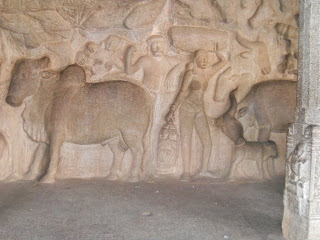A mantra is a sound, or words which are capable of creating spiritual transformation.. Mantras are atoms of pure spiritual energy. Every spoken word has a vibratory pattern.
Mantras actually are sacred incantations- which the Hindu Saints heard through intuitive ears while in deep meditation. Mantras are energy-based sounds. Continuous practice of mantras is known to purify the consciousness and the mind.
Mantras were originally conceived in the Vedas. The most basic mantra is Aum, which in Hinduism is known as the "pranava mantra," the source of all mantras. Mantra japam was considered one of the important method of worship by Hindu sanyasis from the Vedic age.
Mantras have effect on both, the one who chants them and the one who hears them. According to Ramana Maharshi, repetition of mantras , with attention directed to the source of the sound, completely engages the mind. Mantras can be said out loud, silently, or even just thought during meditation. A Mantra used to pass on traditionally recited by a Guru.
There is a meaning to each mantra and when we repeat it over and over again- the meaning gains energy to give us the desired results. The sound vibrations from the mantra invoke spiritual forces .
The results of chanting Mantra depends on many factors like sincerity of the person chanting it, correctness of the procedures followed, concentration of the person, time period in which it is chanted. Sooner or later some results start showing up and adding up. The faith in what we do is most important.











































